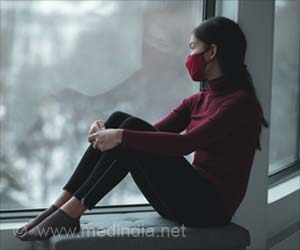Abnormal blood-oxygen levels and breathing rates are strong predictors of poor patient outcomes in COVID-19.

‘Abnormal blood-oxygen levels and breathing rates are strong predictors of poor patient outcomes in-hospital that are associated with higher COVID-19 mortality rates. It is thereby recommended that people with positive COVID-19 test results, particularly those at higher risk of advanced age or obesity, should monitor for blood oxygen below 92% using a pulse oximeter at home and. This aids in preventing the severity of the COVID-19.’





The study evaluated 1,095 patients of age 18 and older hospitalized between March 1 to June 8, 2020, at UW Medicine hospitals in Seattle or to Rush University Medical Center in Chicago with COVID-19. It was discovered that two easily measurable signs of health at home – respiration rate and blood-oxygen saturation are distinctly predictive of higher mortality rate. These data help one predict the progress of their illness and the right time to seek hospital admission for early medical intervention.
Early Signs to measure COVID-19 Severity
"Initially, most patients with COVID don't have difficulty breathing. They can have quite low oxygen saturation and still be asymptomatic. If patients follow the current guidance, because they may not get short of breath until their blood oxygen is quite low, then we are missing a chance to intervene early with life-saving treatment," says Dr. Nona Sotoodehnia, fellow cardiologist and co-lead author of the study, University of Washington School of Medicine.
It was seen that only a few reported feeling short of breath or coughing regardless of blood oxygen while other patients frequently had hypoxemia (low blood-oxygen saturation; 91% or below for this study) or tachypnea (fast, shallow breathing; 23 breaths per minute for this study).
Advertisement
It was noted that only patients on supplemental oxygen benefit from the life-saving effects of glucocorticoids. The findings have relevance for family-medicine practitioners and virtual-care providers, who typically are first-line clinical contacts for people who have received a positive COVID-19 test result and want to monitor meaningful symptoms.
Advertisement
The authors thereby recommend that people with positive COVID-19 test results, particularly those at higher risk of adverse outcomes due to advanced age or obesity, should buy or borrow a pulse oximeter (clip-like devices fit over a fingertip) and monitor for blood oxygen below 92%.
Source-Medindia















